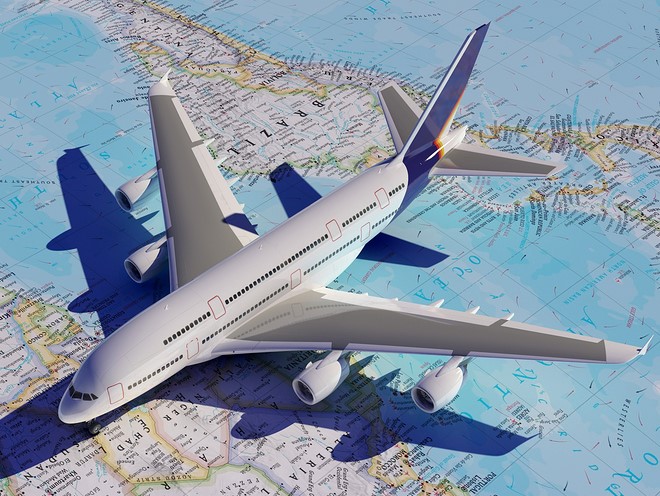Avoid tech hiccups abroad


The For U.S. business travelers, venturing overseas with indispensable smartphones, notebooks, and tablets can be a confounding hassle given spotty Wi-Fi service, expensive mobile roaming charges, and heightened security measures —not to mention incompatible electrical sockets.
Here’s what you need to know before carrying your must-have mobile devices outside the U.S.
To SIM or not to SIM
Your smartphone is the essential business travel device, but using it while traveling internationally can result in a shockingly high bill. Plan ahead to avoid costly data, voice, and texting charges.
Chances are, your wireless carrier offers global roaming packages. This is a convenient but sometimes expensive (and not always high-speed) option. If you’re traveling to just one country, pre-paid local SIM cards are often a less expensive option and allow you access to the local network. Multi-country SIMs grant service without having to swap out cards every time you cross a border.
If SIM cards aren’t your thing, purchase a pre-paid cell phone or pre-paid phone card for landline use when you arrive at your destination.
Still more involved than you’d like? You can also make international calls for a nominal fee on VoIP (Voice over IP) apps like Skype® or Google Hangouts—though VoIP does require access to 3G, 4G, or Wi-Fi. With these apps, you can also IM or send SMS messages for free.
Have Wi-Fi, will travel
Though Wi-Fi hotspots are rather commonplace in the U.S., that’s not true around the globe, partially due to government regulations.
Before leaving, check to see if your hotel has Wi-Fi and also identify internet cafes or other local Wi-Fi spots with a Wi-Fi locator app. You can also carry your own Wi-Fi hotspot by getting a portable hotspot unit or learning about your mobile device’s hotspot capabilities.
Take security measures
With business travel comes the responsibility of carrying sensitive business information on notebooks, phones, tablets, or flash drives—all of which can be a target for thieves.
Don’t leave the office before storing important files on the cloud using services such as OneDrive or Google Docs to ensure access—somehow, someway—to the critical information you’ll need while out of the country, and to simplify sharing information with colleagues back home.
Also, stay one step ahead of hackers, thieves, and other villainous souls by using devices with native security features. HP Elite PCs safeguard device, data, and identity with default security features such as HP BIOS, HP Sure Start, HP Sure View integrated privacy screen, and other biometric and software-based protection.1
Eat, play, work
When traveling abroad, questions will surely pop up about dining or directions to a location. You might also need to communicate in a foreign language, interpret signage, or change your travel itinerary.
To ease the process, install helpful apps before your departure to navigate a foreign land and translate street signs and menus on the spot. Free data-based messaging apps help keep chat conversations flowing around the globe.
Pack the right accessories
Though you’ll likely pack light when traveling internationally, bringing the right tech accessories will minimize frustration and boost productivity. You might want to carry a Bluetooth keyboard for pounding out longer missives on your smartphone or tablet, or a headset for making a Skype call.
Importantly, you’ll also need to know that electrical outlets differ around the globe. The International Electrotechnical Commission offers a helpful World Plugs guide to help you ID the plug and socket common in your destination.
The new HP Powerup Backpack, meanwhile, uses a built-in battery that can charge your smartphone, tablet, or notebook anywhere, multiple times.2
Relax, sit back, and enjoy your trip
Charge your devices before you fly so you can relax in-air listening to calming music, or catching up on movies, TV, or eBooks. With some planning, preparation, and the right tools as well as proper expectations, you can function as easily, conveniently, and productively in São Paulo or Shanghai as Miami or Manhattan.
[1] HP BIOSphere features may vary depending on the PC platform & configuration. HP SureStart available on select Elite products only. HP Sure View panel is an optional feature that must be configured at purchase.
[2] Charging time will vary depending on the charge level of the device being charged. The maximum capacity of the battery will naturally decrease with time and usage. Device stores 84 Wh of energy equivalent to 22400 mAh. Does not support devices that charge with a USB-C connector or proprietary charging methods. Supports HP laptops that use 4.5mm or 7.4mm barrel connectors. Apple iPhones through the 6 Plus and iPad can be charged, but cables are not included. HP laptop power adapter not included; sold separately and required to charge backpack battery. Compatible with most USB-chargeable smartphones, tablets, and other electronic devices with a current rating up to the port limit. Compatible with Apple iPhone and iPad (cable not included). Compatible with most HP laptops with up to a 3 A current rating. HP laptop power adapter not included; sold separately and required to charge backpack battery.
used with permission from HP Technology at Work
Recent Posts
Secure Manufacturing: Protecting Your Business in a Digital Age
Discover how manufacturers can protect their operations, intellectual property, and sensitive data from cyber threats…
Elevate Your Business with eCare SEO & Digital Marketing Services
Discover how eCare SEO & Digital Marketing can help your business thrive online with expert…
Safe and Connected: Strengthening Your Wi-Fi Security with WatchGuard
Discover how WatchGuard Wi-Fi solutions enhance your business security and productivity with cutting-edge technology.
Protecting Every Device: A Guide to Endpoint Security
Discover how endpoint security solutions protect devices from cyber threats, ensuring data safety in the…
Enhance Your Business Network with eCare Network Management
Discover how eCare Network Management can optimize, secure, and monitor your IT infrastructure 24/7, freeing…
Strengthening Your First Line of Defense with MXINSPECT Security Awareness Training
Discover how MXINSPECT Security Awareness Training can fortify your organization against cyber threats.

